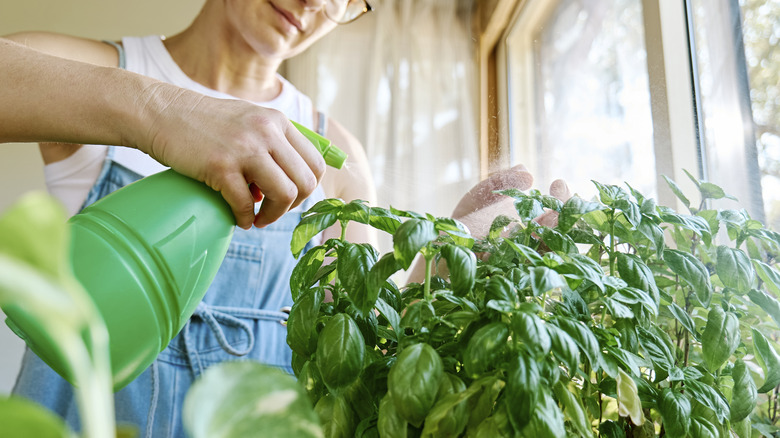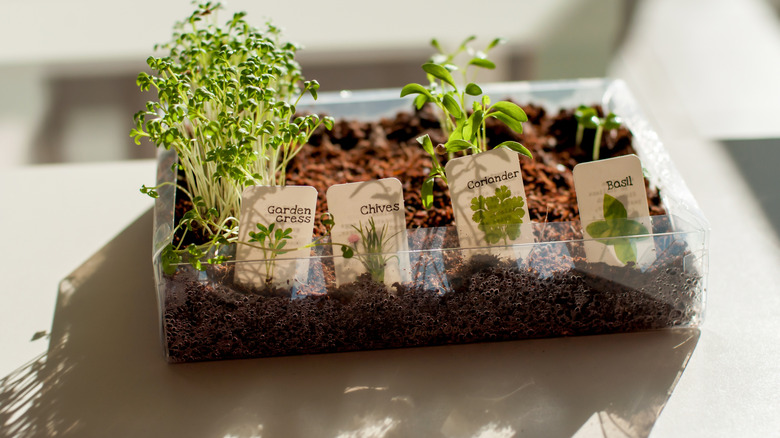The Best Way To Fertilize Your Indoor Herb Container Garden
We may receive a commission on purchases made from links.
Picture it: You've chosen some fragrant, tasty herbs to grow, planted the seeds (or seedlings) in containers, and placed them where the sunlight is streaming in just right. You're wondering what else you'll need to do to set the new herb garden up for success — besides keeping on top of regular watering, that is. Don't forget to make a fertilizing plan. Using fertilizer is key to growing a thriving herb garden in containers because the plants get watered frequently, which tends to drain vital nutrients away from the soil. Plus, herbs are best potted in sterile soil that usually doesn't already contain fertilizer. The best way to fertilize your indoor herb container is to apply a water-soluble fertilizer along with watering the plant, remembering not to overdo it.
Take stock of what herbs you are growing inside to make sure your fertilizing plan is tailored to their needs. In general, you'll want to keep to a frequency of fertilizing your indoor herbs every two to six weeks and not more often, since over-fertilized herbs can grow too quickly, which means they won't be producing enough of the oil that makes them delicious and aromatic. Stick to a regimen of every two weeks for herbs that are plucked often, like a bountiful harvest of basil, which should be pruned shortly after the plant starts producing leaves. A schedule of less frequent fertilization works better for herbs such as rosemary, an herb that needs time to grow back between being harvested a few times per season.
Choosing the right fertilizer for healthy herbs
A fertilizer that will dissolve in water is the best starting point to ensure your indoor herbs can take up the nutrients immediately. Organic varieties of water-soluble fertilizer tend to be gentler than synthetic versions, reducing the danger of over-fertilization. But sticking to the lowest recommended dose of more conventional varieties, like Miracle-Gro Water Soluble Plant Food, will still be safe.
Check to make sure there's an even balance between the nitrogen, phosphorus, and potassium the indoor herbs need. Fish emulsion is a common organic fertilizer, but some gardeners decide it's better kept out of the home due to its strong unpleasant smell. Smart Grower Organic Sea Kelp Fertilizer for Plants is a more indoor-friendly organic variety that leans into the climate-conscious gardening practice of harnessing nutrients from seaweed.
The method of application depends on which variety you're using, but no matter the type, try to fertilize after harvesting some of the herbs, as that's when the plants will need to build up their nutrient stores again. When it's time to fertilize, refer to the package instructions for the right amount, and mix that amount into the water you use on the plants. Miracle-Gro's Water Soluble Plant Food, for example, requires 1½ tablespoons for each 1½ gallons of water. It's easiest to mix the fertilizer right into your watering can so you can water and fertilize in one step. If you're trying the hydroponic method of growing herbs without any soil, look for a fertilizer specifically developed for this situation to make up for the nutrients that would be present in soil but are missing in water.

